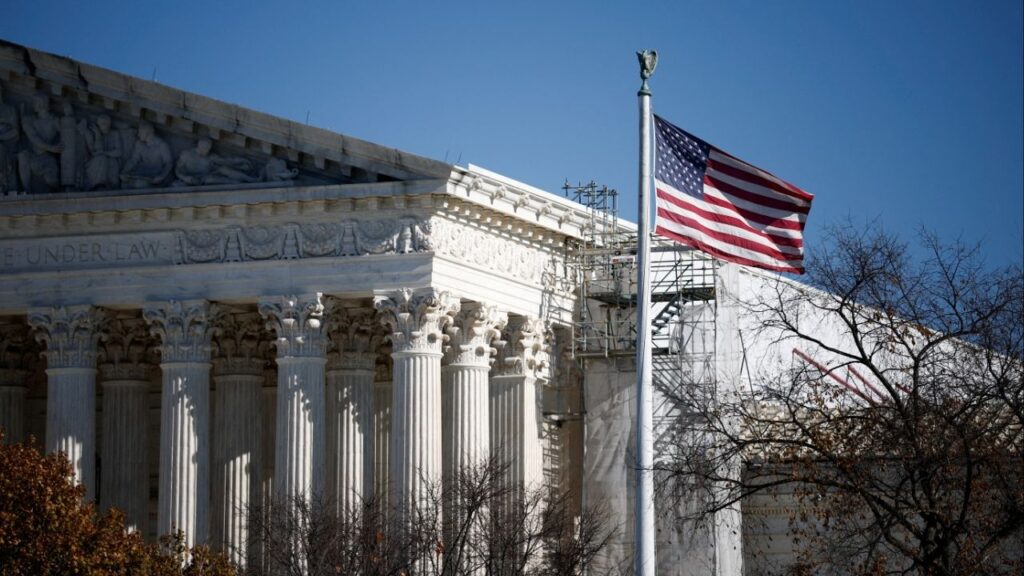President-elect Donald Trump promised mass deportations throughout his campaign. Nonprofits are partnering with the city of Fresno to figure out what that means and how to protect Central Valley families. (GV Wire Composite/Paul Marshall)

- Nonprofits are looking at President-elect Donald Trump's actions during his first term to offer clues about what "mass deportation" could look like.
- Threats to the refugee resettlement process jeopardizes thousands who have fled their home countries, including Afghans escaping Taliban rule.
- The city of Fresno will host a summit this week with nonprofits and church groups to strategize how to ensure deportation actions are legal.
Share
|
Getting your Trinity Audio player ready...
|
Nonprofits, churches, and community-based organizations will gather alongside Fresno officials this week to discuss strategies to protect immigrants as the country speculates about what President-elect Donald Trump meant when he promised mass deportations.
“We’re going to focus a lot on obviously know your rights campaigns and educating our community here locally, but also at the same time, people are concerned about the requirement or the ask of the federal government previously to have local law enforcement agencies work with them on doing any kind of immigration enforcement,” said Fresno City Councilmember Luis Chavez, who moves to the Fresno County Board of Supervisors in January.
California is home to 2.4 million undocumented immigrants, according to a 2022 study from USC, with more than two-thirds living in the U.S. for more than a decade. In addition, Fresno is home to thousands of refugees.
The impact on families in the Central Valley could be devastating, Chavez said. He said he doesn’t want to scare people about what could happen, but he said people need to know their rights.
“The people that are here working, contributing to our local economy, whether it’s farmworkers or people working in the food processing plants, just trying to feed their family, I don’t think people should be remotely thinking about trying to deport or break up families here locally,” Chavez said. “That would be the wrong thing to do for our community, for our local economy.”
Related Story: Sweeping Raids, Giant Camps and Mass Deportations: Inside Trump’s 2025 ...
What Could Mass Deportations Look Like?
Actual details of mass deportation are vague. Trump has said he would deport 20 million people here illegally. Estimates based on government data peg the number of undocumented immigrants at 11 million.
Many think threats could just be campaign rhetoric. However, the president-elect’s cabinet picks could shed light.
In 2023, Trump’s chief of staff pick Stephen Miller wanted the National Guard to help with deportations, according to Reuters.
Taking a more conservative approach, Trump’s pick for border czar, Tom Homan, told CBS News’ “60 Minutes” that mass deportations would be more precise.
“It’s not gonna be a mass sweep of neighborhoods,” Homan said. “It’s not gonna be building concentration camps. I’ve read it all. It’s ridiculous.”
The United Farm Workers Foundation is taking its direction from what happened during Trump’s first term, said Ambar Tovar, immigrant legal services director.

“We saw it under his prior administration, farmworkers being picked up on their way to work at 4 or 5 in the morning, very rural towns being targeted by (Immigration and Customs Enforcement),” Tovar said. “And given what we learned back then, we really are seriously prepared for that.”
In 2018, 40 people left their jobs at Bee Sweet Citrus ahead of an immigration sweep conducted by ICE, according to The Fresno Bee.
One woman who had worked at the plant for 20 years left because of her status, Bee Sweet’s owner said.
Not only do these sweeps impact families, but they also negatively affect the Central Valley economy, Chavez said.
“Any talk of disruption of mass deportations or anything would be a devastating blow to one, our local economy, but also to our families here locally,” Chavez said.
Fresno Is Longtime Recipient of Immigration Programs: FIRM
Fresno has a long history of immigration, beginning with Armenians 150 years ago, said Christine Barker-Dominguez, executive director with Fresno Interdenominational Refugee Ministries.
In the 1970s, the Cambodian genocide, the secret war in Laos, and the Vietnam War brought Hmong, Cambodians, and Laotians to the area.

“Any talk of disruption of mass deportations or anything would be a devastating blow to one, our local economy, but also to our families here locally.” — Fresno City Councilmember Luis Chavez
What scares Barker-Dominguez are threats of ending the refugee resettlement program.
Congress funds refugee programs, but the president sets the admission numbers and administers the program, she said. Trump threatened to end the program entirely, she said.
While threats may simply be campaign posturing, the revocation of parole programs could mean thousands of people having to leave the country. Many face dire situations at their home country, Barker-Dominguez said. Many more risked their lives serving the U.S.
After the evacuation from Afghanistan in 2021, Fresno became home to about 1,000 people fleeing Taliban rule — many of whom could be killed for their work with the U.S. military.
Related Story: Recent Immigration Wave Reshapes US Labor Force Demographics
Home to 1,000 Who Fled the Taliban
They came in on a parole program and were told to apply for asylum, Barker-Dominguez said. Congress passed the Afghan Adjustment Act, which provides protections, but the Heritage Foundation’s conservative manifesto, Project 2025, calls on Congress to reduce those protections. The document calls for a merit-based system.
It specifically names reducing protections for Afghans and Deferred Action for Childhood Arrivals — the program protecting more than 500,000 immigrants who came to the U.S. as children.
Trump has distanced himself from the document, but not from many of its authors and contributors. Miller in 2018 — before the Afghanistan evacuation — spoke against Iraqi and Afghan refugees, according to unnamed sources speaking to CNN.
Ambassador Mark Storella wrote in an opinion piece on The Hill that deliberate actions from Miller and the Trump administration slowed refugee processes that both Iraqis and Afghanis needed to come to the U.S.
After FIRM received its resettlement agency status two years ago, half of the refugees have been from Afghanistan, Barker-Dominguez said. Others come from the Democratic Republic of Congo, Myanmar, or Ethiopia. Venezuelans and Central Americans also use the program. Many fleeing the Syrian civil war came to Fresno.
Before arriving to the U.S., refugees receive medical and security screening. Many have established themselves with careers locally.
“We have Afghans who are coming who have 20 to 30 years of civil engineering experience, of project management experience. They’re getting jobs and they’re helping to invest in our community and build the roads we need,” Barker-Dominguez said.

Central Valley Organizations Developing Legal Strategies to Ensure Constitutionality
The nonprofits, churches, and city officials at the summit will discuss how to inform people of their rights, Chavez said.
The city budgeted $100,000 for the Immigrant Legal Defense Fund, Chavez said. That money goes toward helping people navigate application processes with an emphasis on family reunification and DACA help. Those with criminal histories are excluded, Chavez said.
People don’t need to disclose their immigration status, Chavez said. They shouldn’t let people inside their home without a warrant, he added.
“Oftentimes, our immigrant community is not aware of their rights, and so we’re going to focus on one — educating and empowering folks,” Chavez said.
ICE has the capacity to hold 1,500 people in its Central Valley facilities, Tovar said.
And with the UFW Foundation’s proximity to detention centers, they’ve shifted focus to defending detainees. They are trying to get through as many cases as possible can before Trump’s administration begins.
But since most of their grants focus on helping people apply for benefits, resources are limited.
“We’re having to shift our focus from much of the affirmative work and really grow our removal defense practice,” Tovar said.
Project 2025 Plan Calls for Local Law Enforcement to Aid With Immigration Enforcement
The Heritage Foundation’s Project 2025 calls on Congress to authorize using local law enforcement to help with immigration and border security in the context of Arizona v. United States, a case decided in 2012 by the U.S. Supreme Court.
In his statement, Trump’s chief of staff pick Miller, had suggested using national guard resources from cooperative states for ones less cooperative, according to Reuters.
When Arizona tried to involve state and local law enforcement in immigration issues, the Supreme Court ruled that immigration is a federal issue, Tovar said.
Fresno County Sheriff John Zanoni has not thought about federal agencies deputizing local law enforcement based on hypothetical scenarios, according to Tony Botti, spokesman for the Fresno County Sheriff’s Office.
“We are focused on our day-to-day duties of doing local police work, which does not include immigration and customs enforcement,” Botti said.
Chavez said he supports deporting illegal immigrants who commit crimes. But he said he would not support using local law enforcement to enforce federal immigration policies.
Chavez currently leads in the race for Fresno County supervisor against incumbent Sal Quintero by nearly 4,700 votes.
He said sheriff resources are stretched thin and should be focused on local crime.
Tovar speculated a strategy for Trump could be to expand cooperation between ICE and states that don’t have agreements with the federal agency under 287(g) — the ICE program that delegates immigration duties to local law enforcement.
With a more conservative court, rulings could favor Trump, Tovar said.
“It will be interesting to see how some of these legal challenges take a turn under a very supportive Trump SCOTUS,” Tovar said.
RELATED TOPICS:
Categories

MAHA Activists Urge Trump to Fire His EPA Administrator

Meta Strikes Multiple AI Deals With News Publishers

















